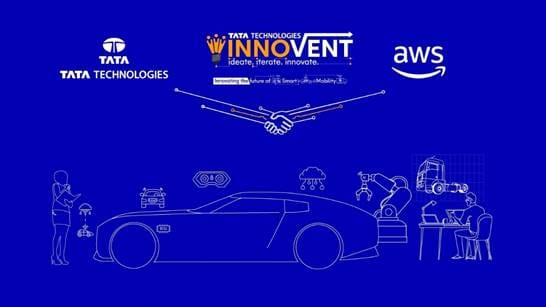Managing Innovation Portfolios
Nikola Tesla, when he invented the Alternating Current (AC), was not just dreaming of a world with power but also a world free of poverty. That’s what innovation should aim to do- end suffering and bring in a more just world.

“Today’s economy is divisive and degenerative by default. Tomorrow’s economy must be distributive and regenerative by design.”
These words from Kate Raworth’s “Doughnut Economics” have lingered in my mind ever since I picked up this very influential take on what a 21st-century economist must be cognizant about. The reason innovation in development takes precedence in the 21st century is that we face new problems of climate change, intergenerational equity and social justice. Nikola Tesla, when he invented the Alternating Current (AC), was not just dreaming of a world with power but also a world free of poverty. That’s what innovation should aim to do - end suffering and bring in a more just world. Innovation in development can take many forms like technological, social, business and policy. It requires collaboration between different actors, including governments, the private sector, civil society organizations, and communities, to drive change and create new opportunities for growth and development.
The reason an innovation portfolio becomes vital for a development organisation is that investment in innovation can have significant spill-over effects. An innovation portfolio for development is a strategic approach to managing a set of innovation projects that are aimed at achieving specific development goals. It involves identifying and prioritizing a range of innovation initiatives, allocating resources to them, and monitoring their progress towards achieving their intended outcomes.
A recent article by Deloitte discusses the importance of innovation portfolios for public sector organizations and provides guidelines for building a successful innovation portfolio. It emphasizes that public sector organizations face unique
challenges in implementing innovation, but a well-structured innovation portfolio can help overcome these challenges. A successful innovation portfolio should be tailored to an organization's specific needs and goals, should include a mix of short-term and long-term projects, and should be managed through a structured and transparent process. Some important insights for takeaway are :
I. The Ambition Matrix: In this approach portfolios are categorized based on the novelty of the solutions and markets they target.
II. Innovation portfolio breakdown into three categories: core, adjacent, and transformational. The investment mix is 70-20-10 respectively for each category.
III. Impact-feasibility portfolio model: This approach focuses on the return on investment. It forces a rethink of the viability of an innovation portfolio and embeds a cost-benefit metric into portfolio management.
IV. Innovation life cycle portfolio model: In this model, portfolios are categorized based on stages of the life cycle – ideation, design, seed, incubation, and scaling. The investment mix optimizes presence in different portfolios based on subjective weights an organisation wants to allocate to different stages of the life cycle.
V. Setting budgets for different stages and types of innovation.
Supplement this with the OECD-OPSI blog article that helps put in perspective how an organisation can re-invigorate its approach to innovation funding. The article provides a framework for building an innovation portfolio through the Innovation Facets Model, which includes defining development goals, generating and evaluating ideas, allocating resources, monitoring and evaluating progress, and refining the portfolio over time. Some key insights from this article were:
I. Dynamic environments: Development organisations work with diverse stakeholders like grass-root innovators, donors, local growth partners, and international funders. They need to be able to balance the needs of all stakeholders in order to optimize partnerships for change.
II. Innovation Portfolio Service offered by the OECD advises organisations to take deliberate steps to identify the quality and context of innovation by staging them as follows: defining the scope of investment-> building a baseline portfolio->strategic goal-setting->how do investments match up to the strategic goal->change innovation portfolio for future scenarios.
III. Identifying a ‘basic’ and ‘custom’ criteria for investment. The investment portfolio would change depending on the intent of each organisation e.g., the FAO might want to prioritize farm innovation and enhanced yields per hectare while an ILO might want to prioritize worker safety. Thus, every portfolio mix should have a “basic” intent and a “custom” intent. The basic intent should ideally be social welfare while the custom intent can change based on the establishment mandates of each organisation.
IV. Rate investments based on a diversified metric of risk, feasibility, propensity for transformational change, propensity for incremental change, or a drive to innovate something completely new.
Recommendations:
I believe the synergies from a combination of the Ambition Matrix model and the rating of investments are particularly relevant for development organizations that are seeking to find an optimal mix of portfolios. Moreover, international development agencies can take lessons from the Tactical Asset Allocation and Strategic Asset Allocation approaches of financial investment portfolios. Under Tactical allocation, investments are made in assets with different gestation periods. E.g., A mix for FAO would be something similar to investment in nutrient fortification and investment in farm equipment enhancement. Under Strategic allocation, the mix can combine different stages of innovation e.g., heavier investment in scaling up of solutions and proportionately lower investment in ideation. Investment allocation should be people-centric and technology-enabled with an aim to reduce misery and amplify welfare. The organisation can allot weights to different phases of the innovation and spread its portfolio across various life cycles.
Furthermore, there needs to be clarity about the end goal of the investment portfolio. It must be to improve welfare outcomes for society in general. However, the importance of serendipity also needs to be balanced. Sometimes, innovation might lead to unintended consequences and unintended discoveries like in the case of the invention of Viagra. The innovation portfolio model that is eventually chosen should be cognizant of such serendipitous discoveries. Innovation may not necessarily be technological but can also be social, business and policy innovation. All these have capacities to be serendipitous. Development organisations should be able to leverage the serendipitous nature of innovation portfolios while at the same time balancing risk through blended portfolio models. The blended models can either be based on the life cycle model, cost-benefit analysis, feasibility or risk-return approach.
Thus, innovation portfolios are a critical component of development, as it enables organizations to stay ahead of the curve and meet the changing needs of society.




